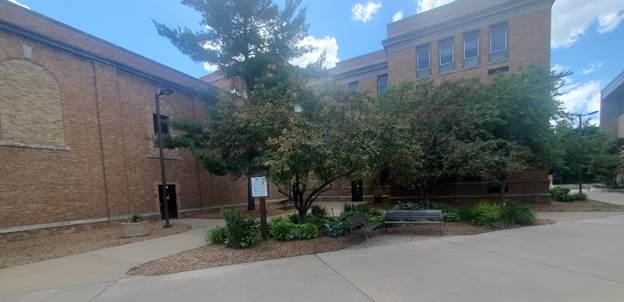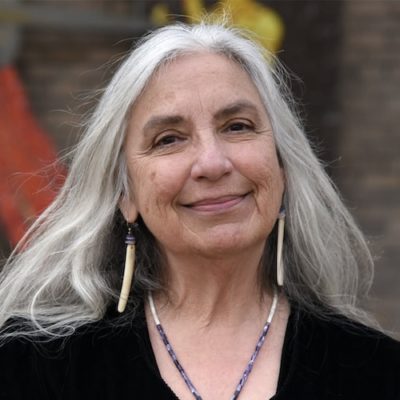
The University of Wisconsin-Stevens Point is seeking an artist or collaboration of artists – preferably members of Indigenous nations – to create a memorial to the Ho-Chunk, Ojibwe, Potawatomi and Menominee people buried under its campus.
Historical records indicate that in the 1860s, members of the Ho-Chunk, Potawatomi, Ojibwe and Menominee nations were displaced to an area near Stevens Point, and many of them died of Scarlet Fever. Their bodies were placed unceremoniously in a quarry, which was also a garbage dump. In 1894, the Stevens Point Normal School – now UW-Stevens Point – was built over the site.
“It’s my firm belief that the ancestors buried beneath our feet really want to teach us,” said Karenann Hoffman, a UWSP alumna and a member of the Oneida Nation who has been advocating for the university to acknowledge the burial for years. “This is an amazing educational opportunity to really think about how as communities, as governments, as human beings, we treat one another … I think it’s an incredible opportunity for UWSP as an educational institution to stand up and say, ‘rotten things have happened in our institutional past. Rotten happen in our world. The important thing is, how do we learn? How do we change our behavior? And how do we lift ourselves up as human beings?’”
Rob Manzke, chief of staff to chancellor Thomas Gibson, said the exact site of the burial is no longer known, but enough historical evidence has been gathered to surmise that it’s under the current campus.
In December 2020, the university erected a temporary marker to acknowledge the tragedy, with plans to create a permanent memorial in a prominent location on the south side of the campus. That’s what the university is currently seeking artists to create.

Submissions, which are due February 14, can describe just about any kind of artwork, as long as it will fit the purpose.
“We didn’t want to restrict what the submissions could be,” Manzke said. “It is going to be outdoors and it is confined to a certain area. So those parameters may dictate what type of art would be generated.”
Hoffman said she’s also very open-minded on what kind of art might be created.
“I leave that to the creative genius of Wisconsin’s Native art community,” she said. “I have no idea what the members of that community will come forward with. I would not begin to imagine, or to limit their imaginations. It could be 2-D, it could be 3-D. It could be digital, it could be landscape. It could be some combination of thereof. It could be a song, it could be a dance, it could be a prayer. I don’t know what it could be, but our artistic community does know.”

According to an announcement sent to all 11 federally recognized Indigenous nations in Wisconsin, Indigenous applicants are preferred, and both individual artists and collaborative groups may apply. Submissions will be reviewed and finalists notified by February 21, and finalists will submit final proposals, including renderings, by March 21. The goal, Manzke said, is to have the work installed by June 15, but that date is flexible based on the artist’s availability.
The chosen artist will receive $5,000, and a $25,000 budget for materials, production and installation.
Hoffman said the selection committee is still being formed, but that she has volunteered to serve on it.
“I also feel strongly that the selection and the vetting process should be given to our Native communities, as well as scholars, our poets, our elders, our students, our children,” she said. “I’ve seen what happens when people outside of our community are charged with caring for our graveyards.”
Manzke said the monument will be just one part of an intentional effort to more meaningfully engage the Indigenous history of the area.
“We’re also working with the tribes on looking at different academic programs, trying to find maybe some scholarship opportunities for native students, looking at expanding their natural history museum,” he said. “it’s more comprehensive.”
“I’m extremely hopeful that this will be the first (step) in a long journey,” Hoffman said. “There is much work that can be done, that should be done. And I hear conversations about starting that work and that’s encouraging to me.”
Proposals for artwork should include:
- Artist’s contact information
- Artist statement
- Resume
- Proposal, including a description of the of the art and a timeline for installation
- Any ongoing maintenance requirements and estimated lifespan
- Budget
- Images of any related work or renderings of the proposed work
- Tribal ID, for those who qualify as tribal members
Interested artists should send proposals to [email protected] or:
Rob Manzke
2100 Main St Room 213
Old Main
Stevens Point WI 54481



